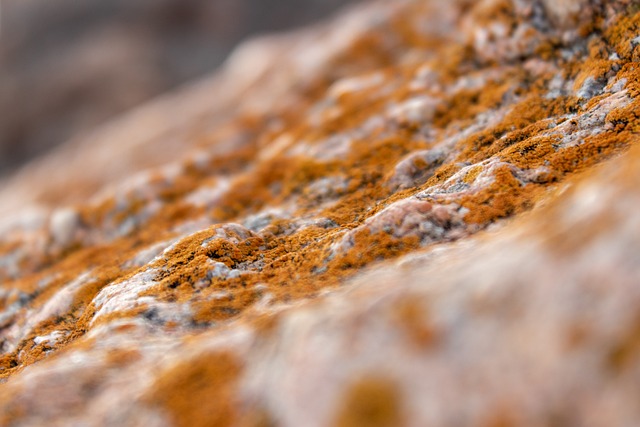Grout Sealing: A Vital Weapon Against Mold and Stains
Grout sealing is a critical strategy for maintaining tiled surfaces in humid environments. Grout's porous nature allows moisture absorption, fostering mold growth and stain issues. Applying silicone or polyurethane sealants creates a protective barrier blocking moisture intrusion, significantly reducing mold risk and enhancing tile aesthetics. This process prevents stains and maintains grout integrity, making it a valuable tool for homeowners to combat mold. Regular reapplication every 3-6 months through touch-ups ensures continued protection against mold and stains, preserving health and aesthetic appeal.
Grout, a vital component in many indoor spaces, often goes unnoticed until it becomes a breeding ground for mold. Understanding the vulnerabilities of grout and its impact on health and property is crucial. This article explores grout sealing as an effective preventive measure against mold and stains, offering insights into types of sealers, application guides, maintenance tips, and common mistakes to avoid. By implementing these strategies, you can safeguard your spaces and ensure a long-lasting, healthy environment.
Understanding Grout and Its Vulnerability to Mold

Grout, a material commonly used to fill gaps between tiles in bathrooms, kitchens, and other high-moisture areas, plays a crucial role in maintaining a clean, aesthetically pleasing space. However, it is not immune to mold growth. Grout’s porous nature makes it susceptible to absorbing moisture, which can lead to the development of mold and stains over time. Mold not only poses health risks but also damages the overall appearance of tiled surfaces.
To mitigate these issues, grout sealing has emerged as an effective solution. By applying a sealants like silicone or polyurethane, you create a protective barrier that prevents moisture from penetrating the grout. This simple yet powerful step significantly reduces the likelihood of mold growth and stains, ensuring your tiles remain vibrant and your spaces remain healthy and clean.
The Impact of Mold on Health and Property

Mold growth, often unnoticed until it becomes a visible problem, can have severe consequences for both health and property. When mold thrives in hidden spaces, like grout between tiles, it releases tiny spores that, when inhaled, can cause respiratory issues, allergies, and even neurological problems in sensitive individuals. Moreover, mold can deteriorate the structure of surfaces it grows on, leading to costly repairs or replacements over time.
Grout sealing is an effective preventative measure that shields these vulnerable areas from becoming breeding grounds for mold and stains. By applying a specialized sealer to grout lines, you create a protective barrier that prevents moisture penetration, halting mold growth in its tracks. This simple step not only preserves the health of your home or property but also ensures the longevity and aesthetic appeal of tiled surfaces.
Why Grout Sealing is an Effective Preventive Measure

Grout sealing is an effective preventive measure for several reasons, making it a crucial step in maintaining a mold-free environment, especially in areas prone to moisture buildup like bathrooms and kitchens. When grout between tiles becomes porous or damaged, it provides a perfect breeding ground for mold and mildew due to its constant exposure to water vapor and lack of airflow. Applying a high-quality grout sealer creates an impenetrable barrier, sealing off these tiny crevices from the surrounding environment. This prevents moisture from penetrating, thus halting the growth of fungi and bacteria that cause stains and discoloration.
By sealing grout, you not only deter mold but also enhance the overall aesthetics of tiled surfaces. Sealing products are designed to fill in existing gaps and cracks, ensuring a uniform and clean look. Furthermore, regular maintenance and reapplication of grout sealer can extend the lifespan of your tiles and grout, making them more resistant to stains and moisture damage. This simple yet powerful step is an essential addition to any mold prevention strategy for homes and commercial spaces alike.
Types of Grout Sealers: Options for Every Budget

When it comes to grout sealing for mold prevention, there’s a wide range of options available to suit every budget. From affordable water-based sealers to more durable silicone varieties, each type offers unique benefits tailored to specific needs. Water-based sealers are cost-effective and easy to apply, making them ideal for DIY projects and smaller spaces. They provide a good level of protection against moisture and mold growth but may not last as long as other options.
For those seeking longer-lasting solutions, silicone grout sealers offer superior durability and resistance to water penetration. While they might be slightly more expensive than water-based alternatives, their effectiveness in preventing mold and stains makes them a popular choice for high-traffic areas or spaces with constant moisture exposure. Silicone sealers form a flexible barrier that moves with the grout, ensuring long-term protection even as the grout expands or contracts.
Applying Grout Sealer: Step-by-Step Guide

Applying a grout sealer is a straightforward process that can significantly enhance your mold prevention efforts. Start by ensuring the surface is clean and dry, removing any existing stains or debris from the grout lines. Next, choose a high-quality grout sealer suitable for your tile and grout material. Follow the manufacturer’s instructions for proper application; typically, this involves applying the sealer with a brush or sprayer in an even coat across the grout lines. Allow the sealer to dry completely according to the recommended time frame on the product label. Once dry, test a small area first to ensure it doesn’t discolor your tiles before sealing the entire grout surface.
This method creates a protective barrier that prevents mold and stains from penetrating the tiny crevices in your grout. Regularly cleaning and reapplying grout sealer as per the manufacturer’s guidelines will keep your spaces looking fresh and reduce the risk of mold growth, ensuring a healthy living or working environment.
Maintenance and Touch-Ups: Ensuring Longevity

Regular maintenance is key to keeping grout looking fresh and preventing mold and stains from taking hold. After initial sealing, it’s important to perform periodic touch-ups every 3-6 months, depending on the product used and environmental factors like humidity. This involves reapplying a thin layer of grout sealer to exposed grout surfaces, especially in high-traffic areas or places prone to moisture buildup.
During these maintenance checks, keep an eye out for any discolored or damaged grout. Promptly repairing minor issues with grout cleaning and resealing can save you from more extensive renovations down the line. By maintaining your grout sealing regularly, you’ll extend the life of your grout, preserve its aesthetic appeal, and ensure a healthy living environment free from mold growth.
Common Mistakes to Avoid During the Sealing Process

When sealing grout for mold and stain prevention, several common mistakes can be avoided with a bit of foresight. One of the most frequent errors is overlooking pre-cleaning. Grout surfaces must be thoroughly cleaned before sealing to remove any existing mold, mildew, or dirt, ensuring the sealer adheres properly and prevents future growth. Skipping this step may result in poor bond strength, leaving your grout susceptible to mold development despite the initial sealing.
Another blunder is choosing the wrong sealer for the job. Different sealers are designed for various materials and applications. Using an unsuitable sealer for your grout type can lead to ineffective protection or even damage to the grout over time. Always select a sealer specifically formulated for grout, considering factors like water resistance, porosity of the grout, and environmental conditions in the space being treated.
